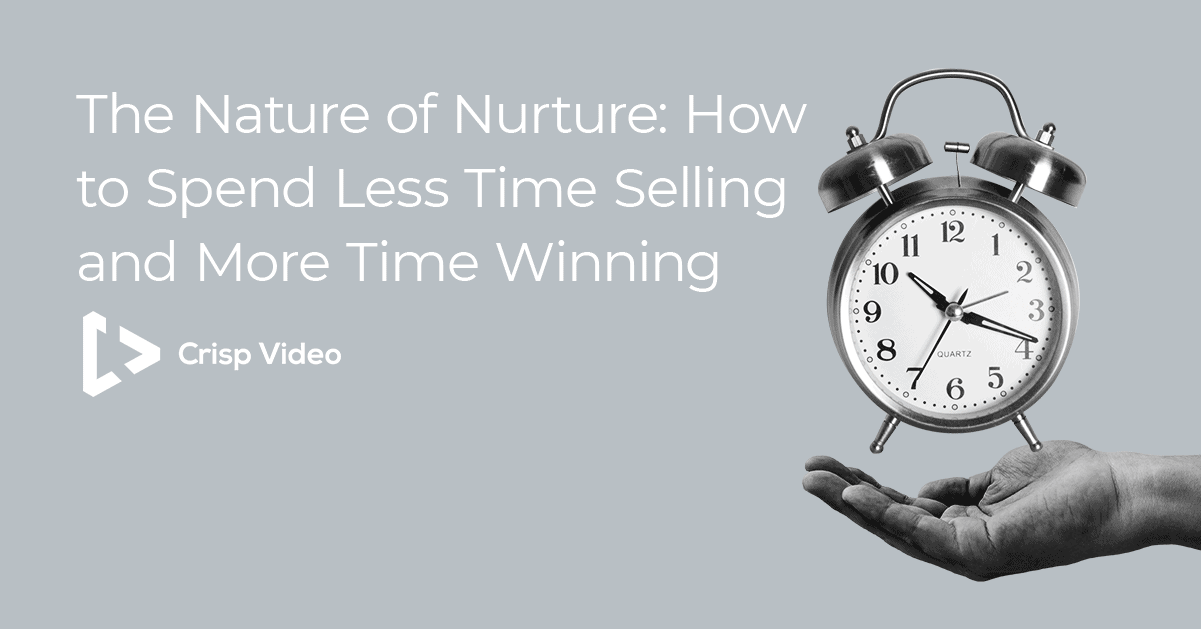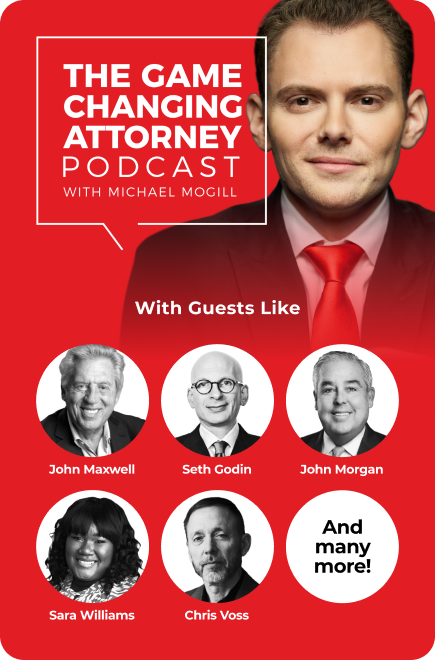Lead nurturing, or lack thereof, is always a topic of conversation here, especially on our sales team.
We spent too much time on an initial call explaining “Why video” instead of “Why Crisp”? Not nurtured enough.
An attorney doesn’t understand the value of video marketing for their firm? Needs more nurture.
They just see us as a commodity and aren’t sure what makes us different from any other video marketing company? You get the picture.
You (hopefully) wouldn’t ask someone to marry you after the first date, so can you really expect a prospective client to hire you right off the bat?
When it comes to getting new business in the door at your law firm, the exact same dynamics are at play. If you want to spend more time helping new clients and less time selling yourself, then you need an effective way to engage, educate, and sell your target audience well ahead of that first phone call or contact form.
What Is Lead Nurturing?
Simply put, lead nurturing is the process of engaging and developing relationships with potential clients throughout each stage of the buyer’s journey as they move through the sales funnel.
Lead nurturing strategically aligns sales and marketing efforts, using targeted content that reaches your ideal buyers where they are instead of just waiting for them to come to you. It can help to sell them on hiring you, sometimes before they even need your services.
Engaging content, when used effectively, can produce an increase in sales opportunities of more than 20%, and prospects receive an average of 10 touches from the time they enter the top of the funnel until they become a paying client (Hubspot).
So what is the best way to nurture your leads into paying clients?
![]()
6 Steps to Developing an Effective Nurture Campaign
-
Lead with Why
Before starting a nurture campaign, or even developing content, figure out what you want to communicate to your audience. According to author Simon Sinek, that “what” should always focus on the “why.” This means clearly stating why you do what you do, your unique value proposition, and what separates you from any other competing firm that a potential client could choose. Differentiate yourself by telling a story about where your passion comes from and why you love to help people. Stay out of the weeds; this is top-of-the-funnel stuff, so keep your themes broad and focus on emotional engagement rather than facts and statistics. They aren’t ready for those yet, and they won’t get there unless you start here.
-
Know thy prospect
Don’t waste time and resources indiscriminately blasting out content. Max out your ROI by honing in on the geography and demographic data related to who you’re trying to reach. Do your research; drill down on who is most likely to seek your services, what they are most likely to need, and where they live. Develop buyer personas, or archetypes, of your ideal clients to craft messaging that will resonate most effectively.
-
Go where they are
Depending on the characteristics and habits of your ideal clients, they may be more or less likely to come across your content based on what platforms you’re using. If you rely heavily on web-based content, know that the majority of internet traffic comes from mobile devices. If that’s the case, make sure that your content is optimized for phones and tablets. Direct mail campaigns or co-marketing with other professional organizations can reach people who don’t regularly surf the web, but with almost 70% of all online adults using Facebook and users age 50-64 or older surpassing 65%, you can’t afford to overlook social media, regardless of your target demographic (Pew Research).
-
Diversify
No one marketing channel or approach is so valuable that you can justify putting all your eggs in one basket. Through multi-channel marketing, as prospective clients transition from email to website to social channels, your presence and messaging can too (Convince & Convert). For example, a new blog subscription on your website can trigger an automated email sequence, and effective social ad targeting can reach them the next time they check their Facebook or watch a video on YouTube. These separate channel engagements foster a top-of-mind presence that is greater than the sum of its parts.
-
Consistency is key
Creating new content, especially high-quality content, takes time. If you don’t establish a routine and set aside time to do it, these efforts will likely fall by the wayside. Several touches, even good ones, won’t keep you top of mind for long if you don’t follow them up with a steady drip of engagement over time. A content calendar is an effective tool for planning and visualizing your lead nurture content strategy for the weeks and months ahead, and it helps keep you accountable. Don’t keep sharing that one blog post you wrote back in 2013. We’ve read it, and now we’re tuning you out.
-
Pick your lure
A good fisherman always carries an array of hooks and baits depending on where he’s fishing and what he’s trying to catch. You need the right content and messaging to hook prospects at different stages of the buyer’s journey. Early on, prospects need emotionally engaging content, like a brand video, to distinguish you from the competition. As they move to the evaluation and decision stages, now is a good time to appeal to logic. Provide case studies, client testimonials, or success stories. 92% of consumers read online reviews before making a decision, and 70% trust reviews from someone they’ve never even met. Master the psychology behind the buyer’s journey and you’ll be able to pick content that resonates with how they’re thinking at each distinct stage.

Use Video
Of all the content mediums you can use in your nurturing campaign, video stands above the rest. It can be optimized for every stage of the buyer’s journey and even incorporated into other mediums, like blog posts, to enhance the overall impact. Here’s why:
-
Video Is Everywhere
- +50% of overall daily media consumption in the US is video.
- It makes up 80% of all global internet traffic, and 78% of the world’s mobile data traffic.
-
Video Boosts SEO & SEM
- Videos attract 300% more traffic and more than double the average time-on-site per visitor.
- 76% of businesses reported an increase in traffic after launching video marketing campaigns.
- Companies using video get roughly 40% more web traffic from search than those who don’t.
-
Video Is Engaging
- Videos are shared 1,200% more than images and text combined.
- 88% of visitors stay on a site longer when it has video prominently displayed.
- 60% of web visitors will opt to watch a video before reading any text.
-
Video Explains Well
- When video and text are both available in the same place, 72% of consumers prefer video to learn about a service.
-
Video Improves Conversions
- 46% of viewers take some kind of action after watching a video ad.
- 76% of marketers report video converts better than all other forms of content.
- A video on your website can increase conversions by 80% or more.
Don’t Wait
With an increasing amount of content is competing for individuals’ attention, their free bandwidth is more of a commodity now than ever. If your firm isn’t nurturing its target audience to foster awareness and interest, help them evaluate, and ultimately guide them to an ideal decision (hiring you), your competition probably is.
By implementing video across a number of marketing channels, honing it for each stage of the buyer’s journey, and leveraging its ability to engage, educate, and convert, you can supercharge your nurture campaigns.
Follow these steps and you’ll have prospective clients come to you asking “When can we start?” instead of “Why should I hire you?”








